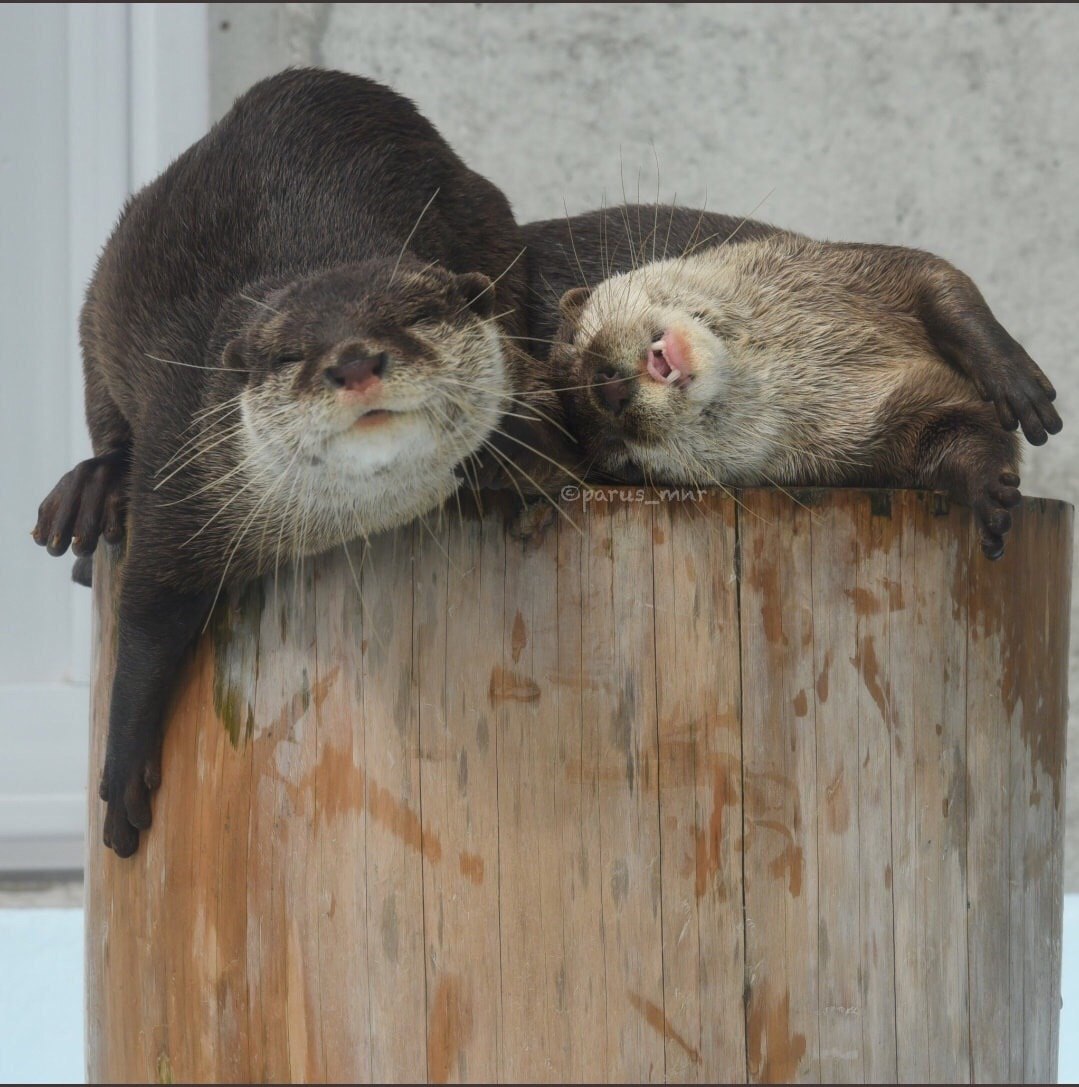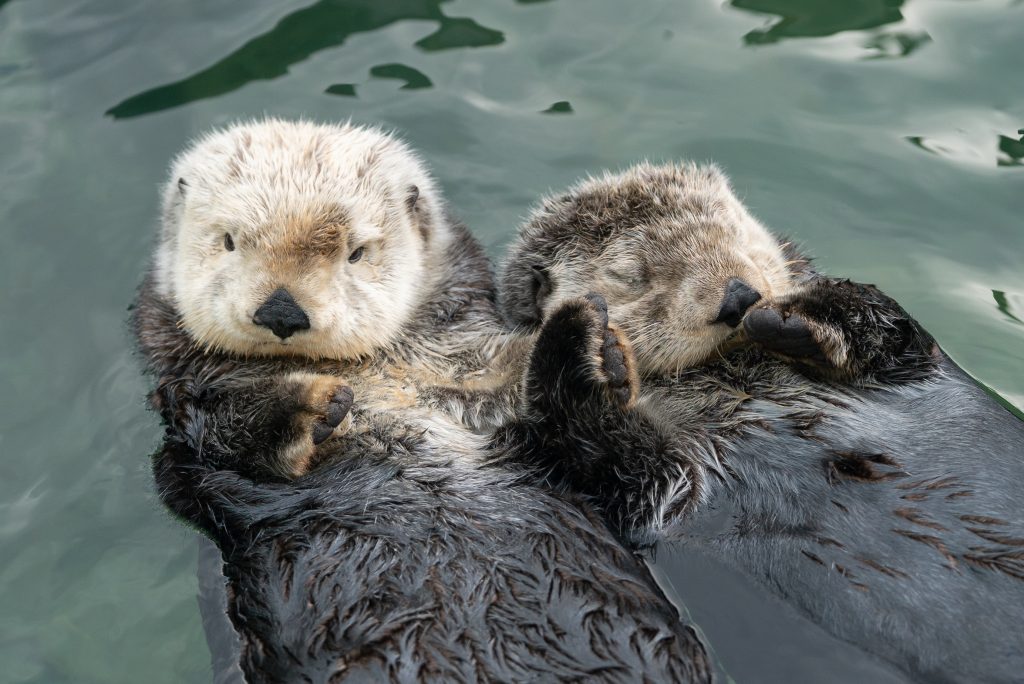Do otters mate for life? This is a question that has intrigued many wildlife enthusiasts and animal lovers alike. Otters are fascinating creatures known for their playful nature and intelligence. Understanding their mating habits and relationships provides a deeper insight into their social structure and behavior.
Many people associate otters with loyalty and companionship due to their close-knit family units. However, the question of whether otters mate for life remains a topic of debate among researchers and wildlife experts. In this article, we will explore the truth behind this popular belief and shed light on the mating habits of these charming aquatic animals.
By examining scientific studies, observations, and expert opinions, we aim to provide a comprehensive understanding of otter mating behavior. Whether you're a nature enthusiast or simply curious about these delightful creatures, this article will offer valuable insights into the world of otters.
Read also:Unveiling The Extraordinary Journey Of Frederick Dump
Table of Contents
- Introduction
- Otter Species and Their Characteristics
- Do Otters Mate for Life? Understanding Their Mating Habits
- The Social Structure of Otters
- Otter Breeding Season and Reproduction
- Monogamy in Otters: Fact or Fiction?
- Conservation Efforts for Otters
- Threats to Otter Populations
- Interesting Facts About Otters
- Conclusion
Otter Species and Their Characteristics
Otters belong to the Mustelidae family, which also includes weasels, badgers, and ferrets. There are 13 recognized species of otters, each with unique characteristics and habitats. The most common species include the sea otter, river otter, giant otter, and Asian small-clawed otter.
These semi-aquatic mammals are found in various parts of the world, from freshwater rivers and lakes to coastal marine environments. Their adaptability to different ecosystems has allowed them to thrive in diverse conditions. Below are some key characteristics of otters:
- Webbed feet for efficient swimming
- Dense fur that provides insulation in cold water
- Highly intelligent and social behavior
- Playful nature, often observed engaging in activities like sliding and wrestling
Types of Otters
While all otters share some common traits, each species has distinct features. For example, the sea otter is known for its use of tools to crack open shellfish, while the giant otter is the largest member of the otter family and often lives in large social groups.
Do Otters Mate for Life? Understanding Their Mating Habits
One of the most common misconceptions about otters is that they mate for life. While some species exhibit strong pair bonds during the breeding season, otters are not strictly monogamous. Most otter species engage in seasonal mating, with males and females coming together primarily for reproduction.
Research has shown that certain species, such as the giant otter, may form long-term pair bonds, but this is not universal across all otter species. In many cases, otters are more likely to exhibit promiscuous behavior, with males mating with multiple females during the breeding season.
Factors Influencing Mating Behavior
Several factors influence the mating behavior of otters, including:
Read also:Cerritos Mall Black Friday Hours Your Ultimate Guide To Shopping
- Environmental conditions
- Availability of food resources
- Social structure within the population
- Genetic diversity
Understanding these factors provides valuable insights into the complex world of otter relationships.
The Social Structure of Otters
Otters are highly social animals, often living in groups known as rafts or families. These groups can range from a few individuals to large gatherings of up to 20 or more otters, depending on the species and habitat.
Within these groups, otters exhibit strong social bonds, particularly between mothers and their offspring. Young otters rely on their mothers for care and protection during their early years, learning essential skills for survival.
Communication and Cooperation
Communication plays a vital role in otter social structure. They use a variety of vocalizations, body language, and scent marking to interact with one another. Cooperation is also evident in activities such as hunting and defending territory.
Otter Breeding Season and Reproduction
The breeding season for otters varies depending on the species and geographic location. In general, otters reproduce once or twice a year, with gestation periods ranging from 60 to 86 days.
During the breeding season, male otters compete for access to females, often engaging in aggressive behaviors to establish dominance. Once a pair has formed, they engage in courtship rituals that may include swimming together, grooming, and vocalizing.
Birth and Development
After a successful mating, female otters give birth to litters of one to five pups. The young are born blind and helpless, relying entirely on their mother for nourishment and care. As they grow, the pups learn to swim, hunt, and fend for themselves under the guidance of their mother.
Monogamy in Otters: Fact or Fiction?
While the idea of otters mating for life is appealing, scientific evidence suggests that true monogamy is rare among otters. Most species exhibit a more flexible mating strategy, with individuals forming temporary pair bonds during the breeding season.
However, some species, such as the giant otter, have been observed forming long-term partnerships. These pair bonds are thought to enhance reproductive success by allowing both parents to contribute to the care and protection of their offspring.
Benefits of Pair Bonding
Pair bonding offers several advantages for otters, including:
- Improved survival rates for offspring
- Increased efficiency in hunting and foraging
- Enhanced defense against predators
While not all otters form long-term partnerships, the benefits of pair bonding make it a valuable strategy for some species.
Conservation Efforts for Otters
Otters face numerous threats in the wild, including habitat destruction, pollution, and overfishing. Conservation efforts are crucial to ensure the survival of these magnificent creatures and the ecosystems they inhabit.
Various organizations and governments have implemented programs to protect otter populations, such as establishing protected areas, enforcing anti-poaching laws, and promoting sustainable fishing practices.
Community Involvement
Engaging local communities in conservation efforts is essential for long-term success. Education and awareness campaigns help people understand the importance of otters in maintaining healthy ecosystems and the benefits of preserving their habitats.
Threats to Otter Populations
Despite conservation efforts, otters continue to face significant threats. Pollution, particularly from oil spills and agricultural runoff, poses a serious risk to their health and survival. Additionally, climate change affects the availability of prey and alters their habitats.
Human activities such as fishing, logging, and urban development also contribute to habitat loss and fragmentation, making it difficult for otters to find suitable living spaces.
Protecting Otter Habitats
Protecting otter habitats involves addressing the root causes of these threats. Implementing stricter environmental regulations, promoting sustainable land use practices, and supporting research initiatives are key steps in safeguarding otter populations for future generations.
Interesting Facts About Otters
Otters are fascinating creatures with many unique characteristics. Here are some interesting facts about these delightful animals:
- Otters have the thickest fur of any mammal, with up to one million hairs per square inch.
- Sea otters are the only marine mammals that use tools, often employing rocks to crack open shellfish.
- Some otter species can hold their breath for up to eight minutes while diving.
- Otters are highly intelligent and have been observed engaging in problem-solving activities.
Conclusion
In conclusion, the question of whether otters mate for life is complex and varies depending on the species and environmental factors. While some otters form long-term pair bonds, most exhibit more flexible mating strategies. Understanding their social structure, breeding habits, and conservation needs is essential for ensuring their survival.
We encourage you to share this article with fellow nature enthusiasts and explore other resources to deepen your knowledge of otters. By supporting conservation efforts and spreading awareness, we can help protect these remarkable creatures and the ecosystems they call home. Don't forget to leave a comment below and let us know what you think about otter mating habits!



